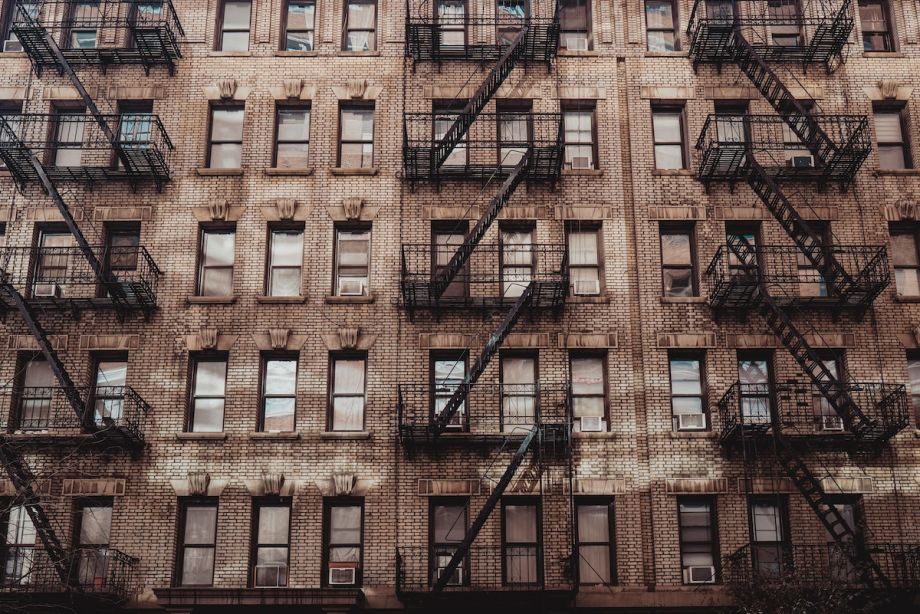Originally built in Greenwich Village in 1883, 9 Minetta Street once contained 20 apartments. Today, it is a single-family townhouse listed for $19,500,000.
On the Upper West Side, after 225 Central Park West converted from a hotel to a cooperative in 1984, it housed 383 apartments. After a series of apartment combinations, only about two-thirds remain.
And on the Upper East Side, the three buildings at 9, 11, and 13 East 75th Street originally housed 28 apartments. Now, those three buildings are being converted to a single-family mansion owned by Russian oligarch Roman Abramovich.


9 Minetta Street in Greenwich Village once contained 20 apartments. Now it's a single-family townhouse. (Images via Google Street View)
For more than a decade, construction of new homes in New York City has failed to keep pace with demand. The resulting housing crisis has pushed rents higher and higher as more people compete for a finite number of apartments.
But while Gov. Kathy Hochul and Mayor Eric Adams have pledged to add hundreds of thousands of new housing units over the next decade, the city’s wealthiest blocks have lost 16,500 homes in the last decade as homeowners and developers combine apartments to create larger ones, most of which have gone unreported.
While the New York City Department of City Planning (DCP) tracks changes in housing, the database underlying that analysis only includes information for new buildings, demolitions, and major alterations–permits that explicitly specify changes in housing before and after construction.
It does not include minor alterations because information on unit counts is buried in the job description, thus requiring hundreds of hours of manual work to review each individual permit. Ultimately, this means that the amount of unit loss is undercounted.
To begin to understand the extent of this undercount, several colleagues and I read through close to 8,000 permits for minor alterations that combined units. I then used these manually assessed records to train a machine-learning algorithm to read the rest. With 97% accuracy, the algorithm analyzed more than 17,000 permits, which I then combined with DCP’s housing database.
When mapped, it was clear that unit loss from apartment combinations is most concentrated in New York City’s highest-income neighborhoods: Manhattan’s Upper East and West Sides; the West Village, Greenwich Village, and SoHo; and in Brooklyn’s Cobble Hill and Brooklyn Heights neighborhoods.
In these neighborhoods, the work to combine apartments is broad, ranging from the modest combination of studio apartments to creating mansions out of multiple, multi-family buildings.
At 310 Riverside Drive, two studio apartments were combined to create an approximately 625 square-foot one-bedroom, which is still smaller than the average apartment size in New York City, according to a 2020 study. These smaller-scale combinations are the most common.
Image: StreetEasy
However, work to combine five or six apartments into one is not unusual.
At 595 West End Avenue, four apartments on the ninth floor and two apartments on the 10th floor were combined to create an approximately 4,900-square-foot duplex. This is roughly two times the size of the average single-family home in the US, according to the US Census.
Image: StreetEasy
Finally, in less common, but not rare instances, wealthy homeowners, like Madonna, Sean Parker, Sarah Jessica Parker and Matthew Broderick cobble together multiple, multi-family buildings to create one mansion (or Frankenmansions), resulting in dozens of lost units in a single project.
At 38 East 76th Street, two buildings once containing 20 apartments were converted into an approximately 14,000 square foot single-family home.
.jpg)
Since 2010, at least 46 multi-family buildings containing 10 or more units were converted to single-family homes, removing more than 475 units from the housing stock.
Outside of owner-occupied housing, some apartment combinations occur when developers reposition older residential buildings into newer ones with larger units.
In the West Village, the condo building at 277 West 10 Street once housed 145 apartments. After redevelopment into luxury condos in 2017, it now only houses 54.

Images: Google Street View
Collectively, unit combinations notably reduce housing availability in neighborhoods planners typically view as optimal for density. The most affected areas are highly accessible by public transit, and close to parks, cultural hubs, and employment centers – features usually linked with housing growth, not decline.
How to protect New York’s housing units
While the city is exploring creative policies to increase the housing supply, like converting obsolete office buildings into housing, few policies exist to prevent our existing stock from disappearing.
In fact, the New York City Department of Buildings (DOB) has actually made it easier to combine units by changing how it classifies this type of work. While changing the number of units in a building would normally require a major alteration permit, in 1969, and again in 1997, the DOB downgraded work to combine units on the same or two adjacent floors to minor alterations.
In other words, work to add a bathroom to an apartment would file the same permit as the work on West End Avenue to combine six apartments across two floors.
Instead of making it easier to lose units, New York City should look to other cities to develop policies to protect its housing stock, especially as it confronts record-high rents and high displacement pressure in low-income neighborhoods.
Responding to displacement in its Pilsen and Logan Square neighborhoods, Chicago adopted anti-demolition provisions to disincentivize the conversion of two- to four-family buildings into single-family homes. This so-called “Teardown Tax” has already resulted in 90% and 40% reductions in demolitions of multi-family homes in the neighborhoods in which it has been implemented.
In Brooklyn, where years of gentrification continue to displace residents, the conversion of multi-family homes to single-family homes is common. Neighborhoods like Bedford-Stuyvesant, Crown Heights, Williamsburg, and Bushwick, could benefit from adopting similar policies to preserve housing units and counteract displacement.
In San Francisco, a special hearing is required for any project that would result in any unit loss. Additionally, for any construction resulting in the loss of more than three units, special approval is required.
In New York City, implementing such a policy would more broadly capture enlargements, but it may not be appropriate in all circumstances.
In some households, apartment combinations may offer opportunities to maintain vital social safety nets. For instance, households expecting children can grow their families within their existing space, while larger apartments can also accommodate in-home care for the elderly. And for many New Yorkers, who already live in some of the smallest apartments in the country, there is a justifiable desire to live in a larger unit.
But we must establish at what point the loss of desperately needed housing outweighs the desire for more space. Well-connected neighborhoods like the West Village, which according to DCP actually lost more units than it produced in 2022, should not be so easily allowed to shrink and become enclaves increasingly reserved only for the wealthy.
While building new homes is the surest way out of the housing crisis, construction of new homes is slowing. This means that it is increasingly important to protect the city’s vulnerable supply of existing housing, and more closely regulating apartment combinations is a solid place to start.
This article is part of Backyard, a newsletter exploring scalable solutions to make housing fairer, more affordable and more environmentally sustainable. Subscribe to our weekly Backyard newsletter.
Matthew Pietrus, AICP has expertise in urban planning, land use and development, and data analytics. He began his career studying housing rights in Kampala, Uganda, and has since worked as a city planner in Chicago, Newark, and New York City at various public and non-profit organizations. He has also taught econometrics and multiple regression at the NYU Wagner Graduate School of Public Service, where he earned a Master of Urban Planning.


















